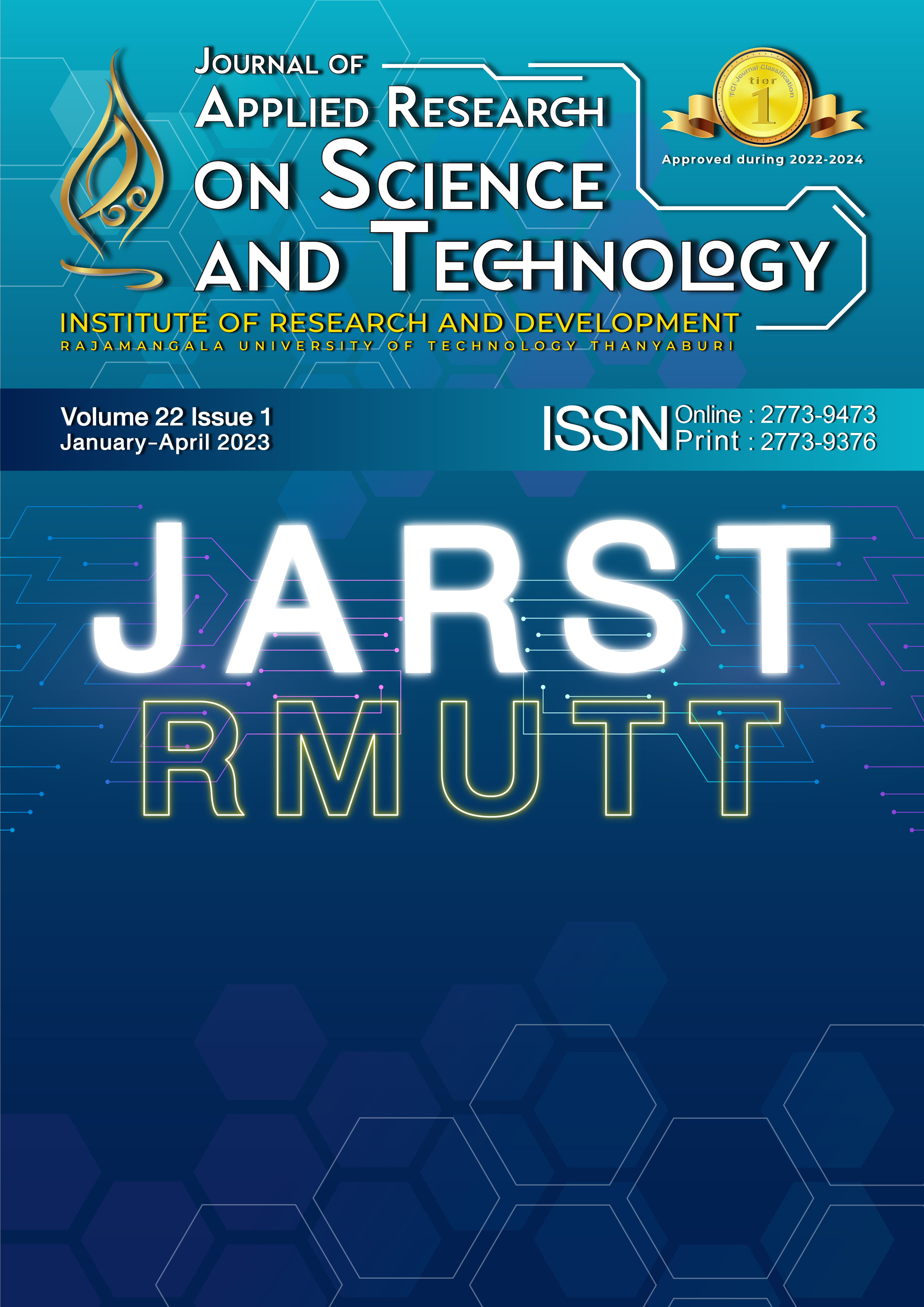Rapid Prediction of Melon Sweetness Using Image Processing Techniques and Algorithmic Models
Main Article Content
Abstract
Rapid prediction of melon sweetness using image processing techniques and algorithmic models is studied. The sweetness of melon is usually greater than 12.5 Brix, which can be measured with a digital sweet meter where most consumers do not know such a problem. This work proposed an image processing technology combined with an algorithmic model to determine the sweetness of the melon. The melon sweetness measurement method collects 100 samples of full-leaf melon photographs from 4 sides, top, bottom, left and right, consisting of weight, circumference, stalk size, and small circle axis size. The size of the core to the edge of the large circle net is height, light intensity, and relative humidity, color temperature and intensity using image processing techniques. All of this data is learned using Random Forest (RF) and eXtreme Gradient Boosting (XGB) techniques, one of the machine learning algorithms used to predict melon sweetness. The test results showed that the R-squared value of model learning in the XGB algorithm was 99%, while that of the RF algorithm was 95%. It could be concluded that the XGB algorithm was effective in model learning better than the RF algorithm, with the weight of the melon being the most prominent. The melon color value was the least significant in interpreting the melon sweetness value. For the actual test, a model of the XGB algorithm was used to predict the sweetness value of 50 melons. The prediction accuracy is up to 95%, utilized for checking melon results.
Article Details

This work is licensed under a Creative Commons Attribution-NonCommercial-NoDerivatives 4.0 International License.
References
Allkaset. Melon [Internet]. [Cited 2022 Jan 11]. Availability from: https://shorturl.asia/nZwJa
Eiamopas K. [Digital image processing. introduction and principles]. Kasetsart Engineering Journal (Thailand). 1992;6(18):30-42. Thai.
Utanon W, Phongsuphap S, Sawangarom W, Singkleewan N. [Non-destructive image processing technique and rule - based classification in estimating the quality of fruit]. J Inform. 2020;19:129-38. Thai.
Visitsora-at P. Basic Metrics for Measuring the Performance of Machine Learning Models [Internet]. [Cited 2019 Oct 29]. Availability from: https://shorturl.asia/nrKXT.
Van der Walt S, Schönberger JL, Nunez- Iglesias J, Boulogne F, Warner JD, Yager N, et al. Scikit-image: image processing in Python. Peer J. 2014;2:453.
Lyer LS. AI enabled applications towards intelligent transportation. Transport Eng. 2021;5(1):100083.
Golberg M, Cho H. Introduction to Regression Analysis. 2010.
He T, Li S, Wu S, Li K. Small-signal Stability analysis for power system frequency regulation with renewable energy participation. Math Probl Eng. 2021;2021:5556062.
Yang Y, Zhang X, Yang L. Data-driven power system small-signal stability assessment and correction control model based on XGBoost. Energy Reports. 2022;8:710-17.
Zhu L, Zhou X, Zhang C. Rapid identification of high-quality marine shale gas reservoirs based on the oversampling method and random forest algorithm. Artificial Intelligence in Geosciences. 2021;2:76-81.


